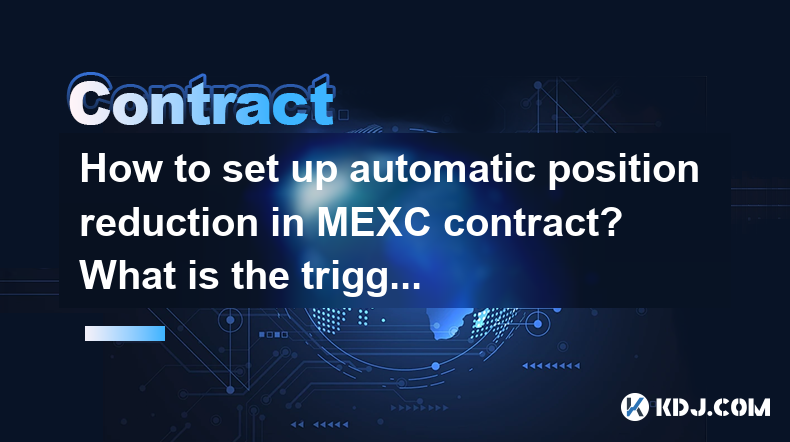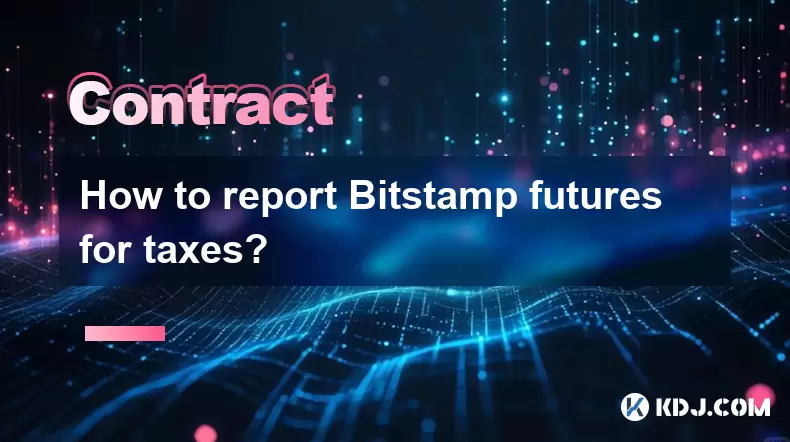-
 Bitcoin
Bitcoin $115000
1.10% -
 Ethereum
Ethereum $3719
2.93% -
 XRP
XRP $2.997
2.56% -
 Tether USDt
Tether USDt $1.000
0.02% -
 BNB
BNB $766.7
0.98% -
 Solana
Solana $169.6
3.97% -
 USDC
USDC $0.9999
0.00% -
 TRON
TRON $0.3391
1.82% -
 Dogecoin
Dogecoin $0.2060
3.53% -
 Cardano
Cardano $0.7429
2.91% -
 Hyperliquid
Hyperliquid $38.02
1.70% -
 Stellar
Stellar $0.4021
3.23% -
 Sui
Sui $3.515
3.31% -
 Bitcoin Cash
Bitcoin Cash $574.2
2.68% -
 Chainlink
Chainlink $16.85
3.10% -
 Hedera
Hedera $0.2461
1.54% -
 Ethena USDe
Ethena USDe $1.001
0.02% -
 Avalanche
Avalanche $22.28
1.26% -
 Litecoin
Litecoin $118.3
1.25% -
 UNUS SED LEO
UNUS SED LEO $8.923
-0.75% -
 Toncoin
Toncoin $3.255
2.35% -
 Shiba Inu
Shiba Inu $0.00001239
2.42% -
 Uniswap
Uniswap $9.834
3.77% -
 Polkadot
Polkadot $3.690
2.48% -
 Dai
Dai $1.000
0.02% -
 Monero
Monero $282.9
-3.30% -
 Bitget Token
Bitget Token $4.367
0.70% -
 Cronos
Cronos $0.1454
5.37% -
 Pepe
Pepe $0.00001055
3.60% -
 Ethena
Ethena $0.6156
8.72%
How to set up automatic position reduction in MEXC contract? What is the trigger condition?
Setting up automatic position reduction on MEXC helps manage risk by automatically reducing your position when specific conditions like price, profit, loss, or time are met.
May 01, 2025 at 06:57 pm

Setting up automatic position reduction in MEXC contract trading can be a vital tool for managing risk and maintaining control over your investments. This feature allows you to automatically reduce your position when certain conditions are met, helping you to mitigate potential losses or lock in profits. In this article, we will guide you through the process of setting up automatic position reduction and discuss the various trigger conditions you can use.
Understanding Automatic Position Reduction
Automatic position reduction is a feature that allows you to set specific conditions under which your position in a contract will be automatically reduced or closed. This is particularly useful in volatile markets where quick reactions are necessary to manage risk effectively. By setting up these conditions, you can ensure that your trades are managed according to your risk tolerance and trading strategy, even when you are not actively monitoring the market.
Accessing the MEXC Contract Trading Platform
To set up automatic position reduction, you first need to access the MEXC contract trading platform. Here's how you can do it:
- Log into your MEXC account: Navigate to the MEXC website and enter your login credentials.
- Go to the Contract Trading section: Once logged in, find the "Contract" tab on the main menu and click on it to access the contract trading interface.
- Select the contract you wish to trade: Choose the specific contract you want to trade from the list provided on the platform.
Setting Up Automatic Position Reduction
Once you have accessed the contract trading platform, follow these steps to set up automatic position reduction:
- Open the position management panel: On the contract trading interface, locate and click on the "Position" tab to open the position management panel.
- Select the position you want to manage: From the list of your open positions, select the one you want to set up for automatic reduction.
- Click on the "Auto-Reduction" button: This button is usually found within the position details. Clicking it will open the auto-reduction settings.
Configuring the Trigger Conditions
The trigger conditions determine when the automatic position reduction will be activated. MEXC offers several types of triggers you can use:
- Price Trigger: This condition will trigger the reduction when the contract's price reaches a specified level. For example, if you set a price trigger at $50,000 for a Bitcoin contract, the position will be reduced when the price hits $50,000.
- Profit Trigger: This condition triggers the reduction when your position reaches a certain profit level. If you set a profit trigger at 10%, the position will be reduced when your profit reaches 10% of your initial investment.
- Loss Trigger: Similar to the profit trigger, this condition will activate the reduction when your position incurs a specified loss. Setting a loss trigger at 5% means the position will be reduced when the loss reaches 5%.
- Time Trigger: This condition triggers the reduction at a specific time, regardless of the price or profit/loss. For example, setting a time trigger for 24 hours from the time of setting up will automatically reduce the position after 24 hours.
Setting Up the Reduction Parameters
After selecting the trigger condition, you need to set up the reduction parameters. These parameters determine how the position will be reduced once the trigger is activated. Here's how to do it:
- Choose the reduction type: You can choose between "Partial Reduction" and "Full Reduction". Partial reduction will reduce your position by a specified percentage, while full reduction will close your entire position.
- Set the reduction percentage: If you choose partial reduction, you need to specify the percentage of the position you want to reduce. For example, setting a 20% reduction means 20% of your position will be closed when the trigger is activated.
- Confirm the settings: After setting up the trigger condition and reduction parameters, review your settings and confirm them. The platform will then monitor your position and execute the reduction according to your specified conditions.
Monitoring and Adjusting Your Auto-Reduction Settings
Once your auto-reduction settings are in place, it's important to monitor your positions and adjust the settings as needed. Here's how you can do it:
- Regularly check your positions: Use the position management panel to keep an eye on your open positions and their performance.
- Adjust trigger conditions: If market conditions change or your trading strategy evolves, you may need to adjust the trigger conditions. Access the auto-reduction settings and modify them as necessary.
- Review reduction parameters: Similarly, you may want to change the reduction percentage or switch between partial and full reduction based on your current risk management needs.
Frequently Asked Questions
Q: Can I set up multiple trigger conditions for the same position?
A: Yes, MEXC allows you to set up multiple trigger conditions for the same position. This means you can have different triggers for price, profit, loss, and time, providing you with more flexibility in managing your trades.
Q: What happens if the market price fluctuates rapidly and triggers multiple conditions at once?
A: In the case of rapid market fluctuations triggering multiple conditions simultaneously, MEXC will prioritize the triggers based on the order in which they were set. The first trigger to be met will be executed, and subsequent triggers will be ignored until the position is re-evaluated.
Q: Is there a fee associated with using the automatic position reduction feature?
A: MEXC does not charge a separate fee for using the automatic position reduction feature. However, standard trading fees will apply when the position is reduced or closed.
Q: Can I cancel or modify an auto-reduction order after it has been set?
A: Yes, you can cancel or modify an auto-reduction order at any time before it is triggered. Simply go back to the auto-reduction settings and make the necessary changes or cancel the order entirely.
Disclaimer:info@kdj.com
The information provided is not trading advice. kdj.com does not assume any responsibility for any investments made based on the information provided in this article. Cryptocurrencies are highly volatile and it is highly recommended that you invest with caution after thorough research!
If you believe that the content used on this website infringes your copyright, please contact us immediately (info@kdj.com) and we will delete it promptly.
- IREN Overtakes: A New King in the Bitcoin Miner Hashrate Race?
- 2025-08-07 16:31:29
- Memecoins Mania: Whales Eye Pepe Dollar (PEPD) as Bonk Cools Off, While MoonBull Hogs the Spotlight!
- 2025-08-07 16:51:17
- Unilabs, PEPE, and Investment Risk: Navigating the Crypto Hype
- 2025-08-07 16:31:29
- Meme Coin Mania: Rug Pulls, CZ-Inspired Tokens, and the Wild West of Crypto
- 2025-08-07 16:57:14
- HashFlare Founders Face the Music: Jail Time Looms?
- 2025-08-07 14:30:12
- Pepeto's Pounce: Meme Coin Mania Meets Blockchain Infrastructure
- 2025-08-07 15:10:12
Related knowledge

Why is my Bitstamp futures position being liquidated?
Jul 23,2025 at 11:08am
Understanding Futures Liquidation on BitstampFutures trading on Bitstamp involves borrowing funds to open leveraged positions, which amplifies both po...

How to report Bitstamp futures for taxes?
Jul 30,2025 at 08:35am
Understanding Bitstamp Futures and Taxable EventsWhen trading Bitstamp futures, it’s essential to recognize that these financial instruments are treat...

Does Bitstamp offer inverse contracts?
Jul 23,2025 at 01:28pm
Understanding Inverse Contracts in Cryptocurrency TradingIn the realm of cryptocurrency derivatives, inverse contracts are a specific type of futures ...

What is the difference between futures and perpetuals on Bitstamp?
Jul 27,2025 at 05:08am
Understanding Futures Contracts on BitstampFutures contracts on Bitstamp are financial derivatives that allow traders to speculate on the future price...

How to find your Bitstamp futures trade history?
Jul 23,2025 at 08:07am
Understanding Bitstamp and Futures Trading AvailabilityAs of the current state of Bitstamp’s service offerings, it is critical to clarify that Bitstam...

Can I use a trailing stop on Bitstamp futures?
Jul 23,2025 at 01:42pm
Understanding Trailing Stops in Cryptocurrency TradingA trailing stop is a dynamic type of stop-loss order that adjusts automatically as the price of ...

Why is my Bitstamp futures position being liquidated?
Jul 23,2025 at 11:08am
Understanding Futures Liquidation on BitstampFutures trading on Bitstamp involves borrowing funds to open leveraged positions, which amplifies both po...

How to report Bitstamp futures for taxes?
Jul 30,2025 at 08:35am
Understanding Bitstamp Futures and Taxable EventsWhen trading Bitstamp futures, it’s essential to recognize that these financial instruments are treat...

Does Bitstamp offer inverse contracts?
Jul 23,2025 at 01:28pm
Understanding Inverse Contracts in Cryptocurrency TradingIn the realm of cryptocurrency derivatives, inverse contracts are a specific type of futures ...

What is the difference between futures and perpetuals on Bitstamp?
Jul 27,2025 at 05:08am
Understanding Futures Contracts on BitstampFutures contracts on Bitstamp are financial derivatives that allow traders to speculate on the future price...

How to find your Bitstamp futures trade history?
Jul 23,2025 at 08:07am
Understanding Bitstamp and Futures Trading AvailabilityAs of the current state of Bitstamp’s service offerings, it is critical to clarify that Bitstam...

Can I use a trailing stop on Bitstamp futures?
Jul 23,2025 at 01:42pm
Understanding Trailing Stops in Cryptocurrency TradingA trailing stop is a dynamic type of stop-loss order that adjusts automatically as the price of ...
See all articles

























































































